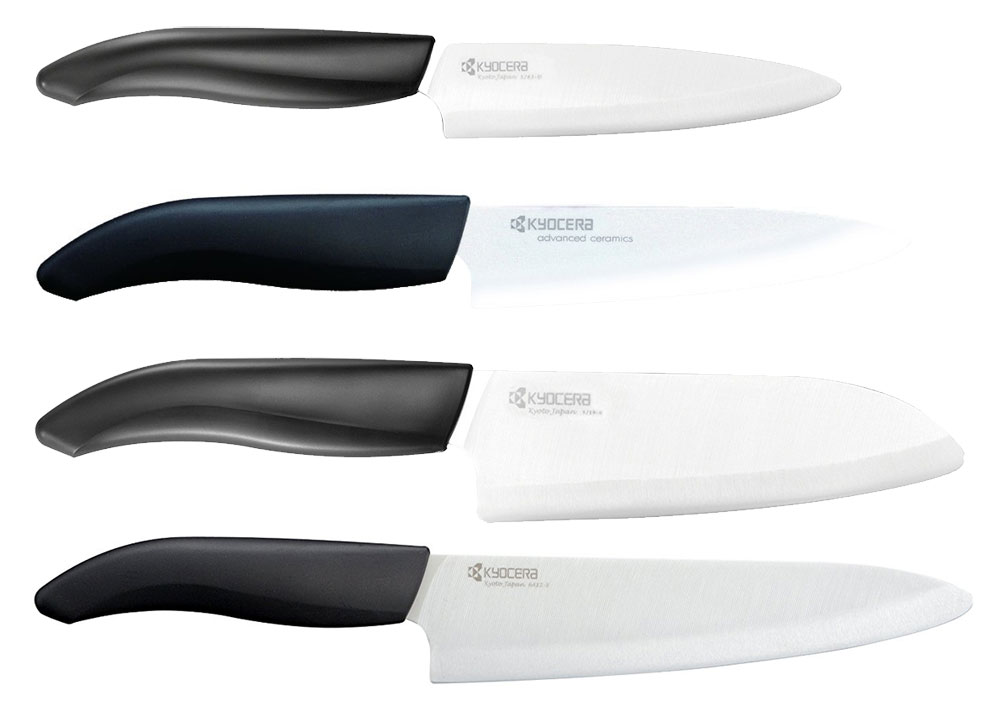Relatively new in the world of kitchen knives, a ceramic knife is made out of very hard and tough ceramic, often zirconium dioxide (also known as zirconia). Zirconia is rated at 8.5 on the Mohs scale of mineral hardness, which is slightly higher than hardened steel at 7.5 to 8 Mohs but less than the 10 for diamond. The very hard edge of a ceramic kitchen knife rarely needs sharpening.
Advantages that ceramic knives have is that they will not corrode in harsh environments, are non-magnetic, and do not conduct electricity at room temperature. Due to their resistance to acids and caustic substances, plus their usefulness in keeping a cutting edge for longer than forged metal knives, ceramic knives are a great kitchen tool for slicing boneless meat, vegetables, fruit and bread.
However, ceramic knives are brittle and they may break if dropped on a hard surface. They also are not suitable for chopping through bones or frozen foods, or in other situations which require prying. This can result in chipping, snapped points or catastrophic failure. There are a few higher quality brands that now offer a blade created through an additional hot isostatic pressing (HIP) step, and this does improve the toughness of the ceramic knife.

One of our favorite manufacturers of ceramic kitchen knives is Kyocera. We are especially impressed by their range of high quality but well priced Kyocera FK Series White Ceramic Knives. Unfortunately Kyocera have updated their range of knives since we wrote this article and the FK White Series Ceramic Knives range is no longer for sale. However, Kyocera still make an amazing choice of ceramic bladed kitchen knives and below are a few of the great options available to buy today.











